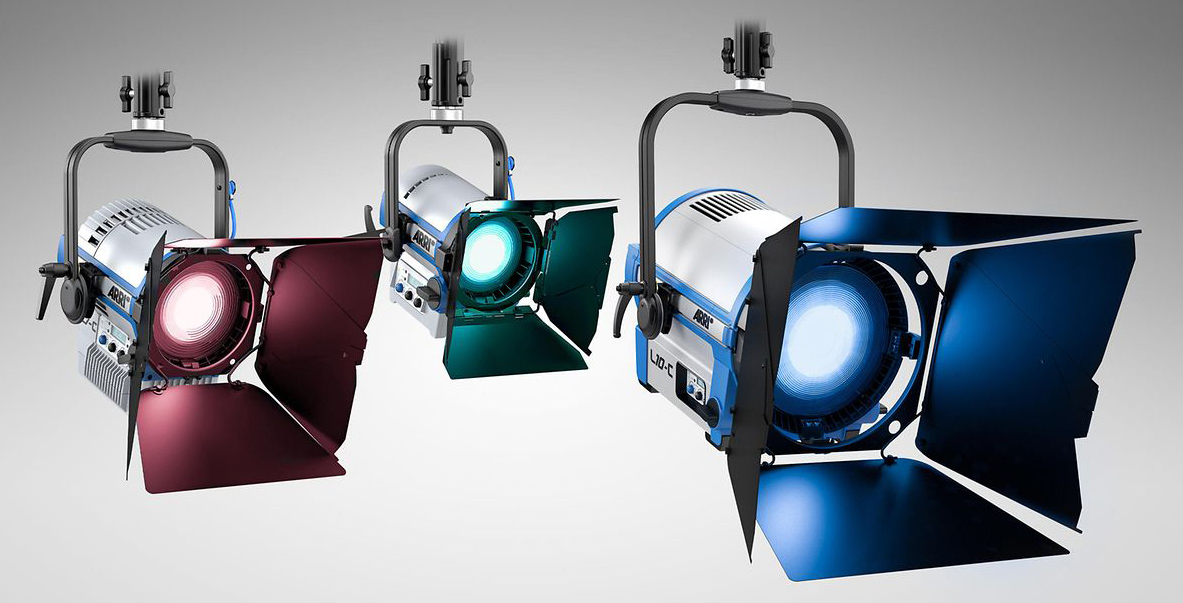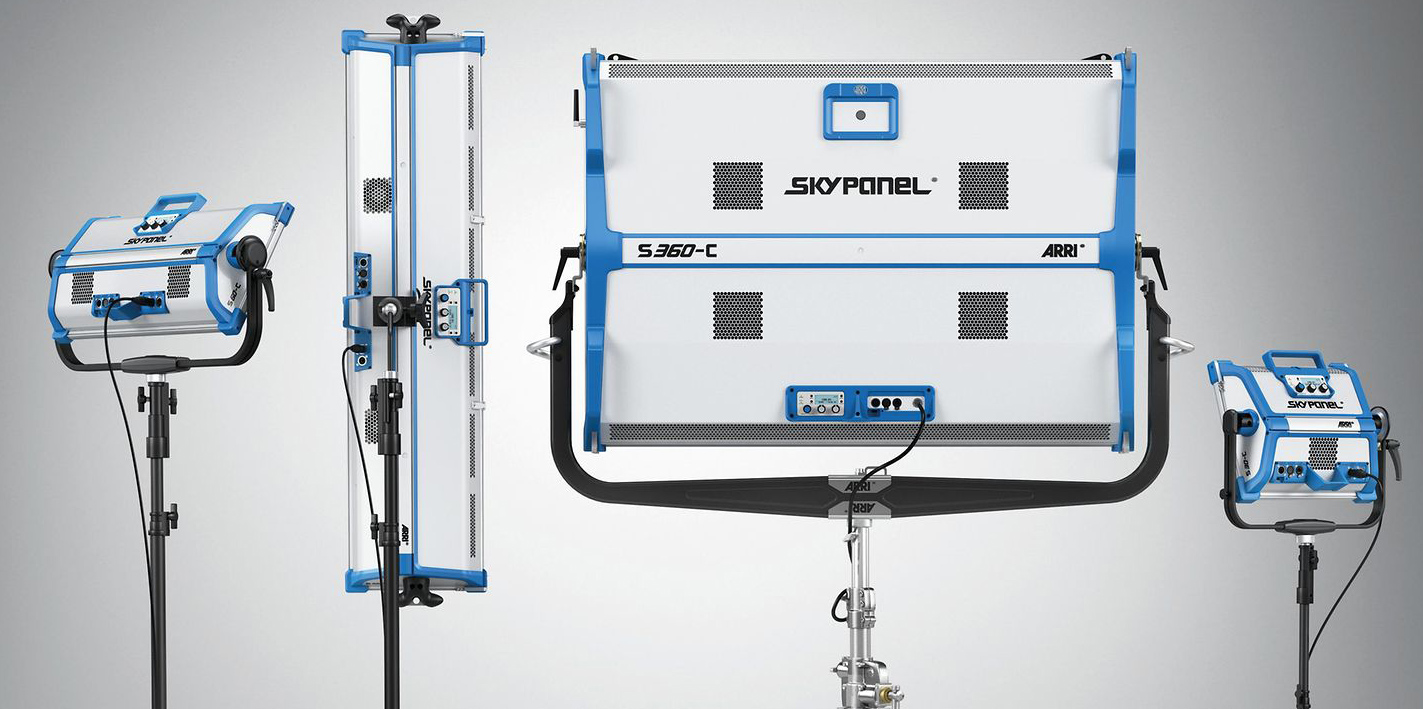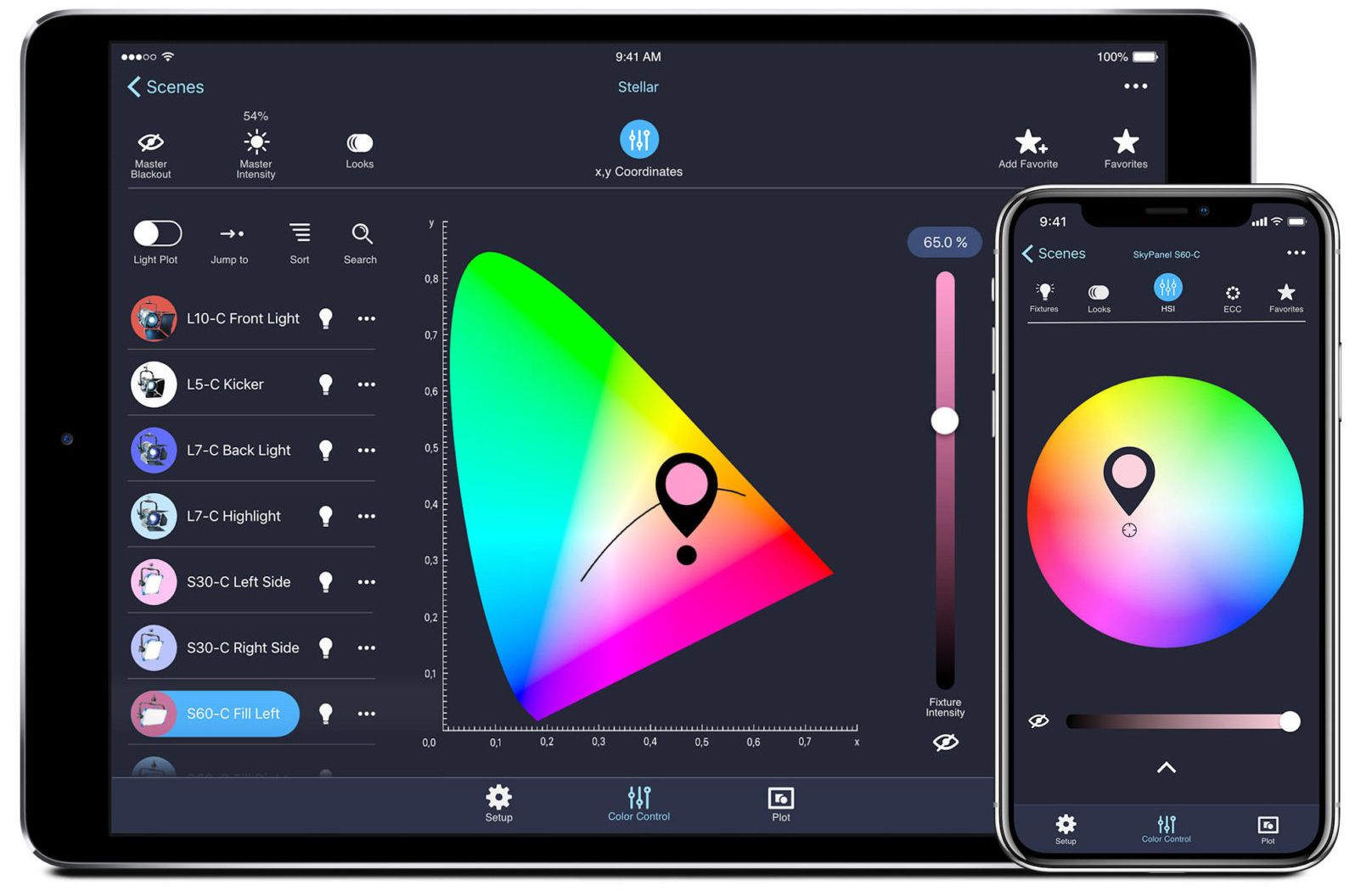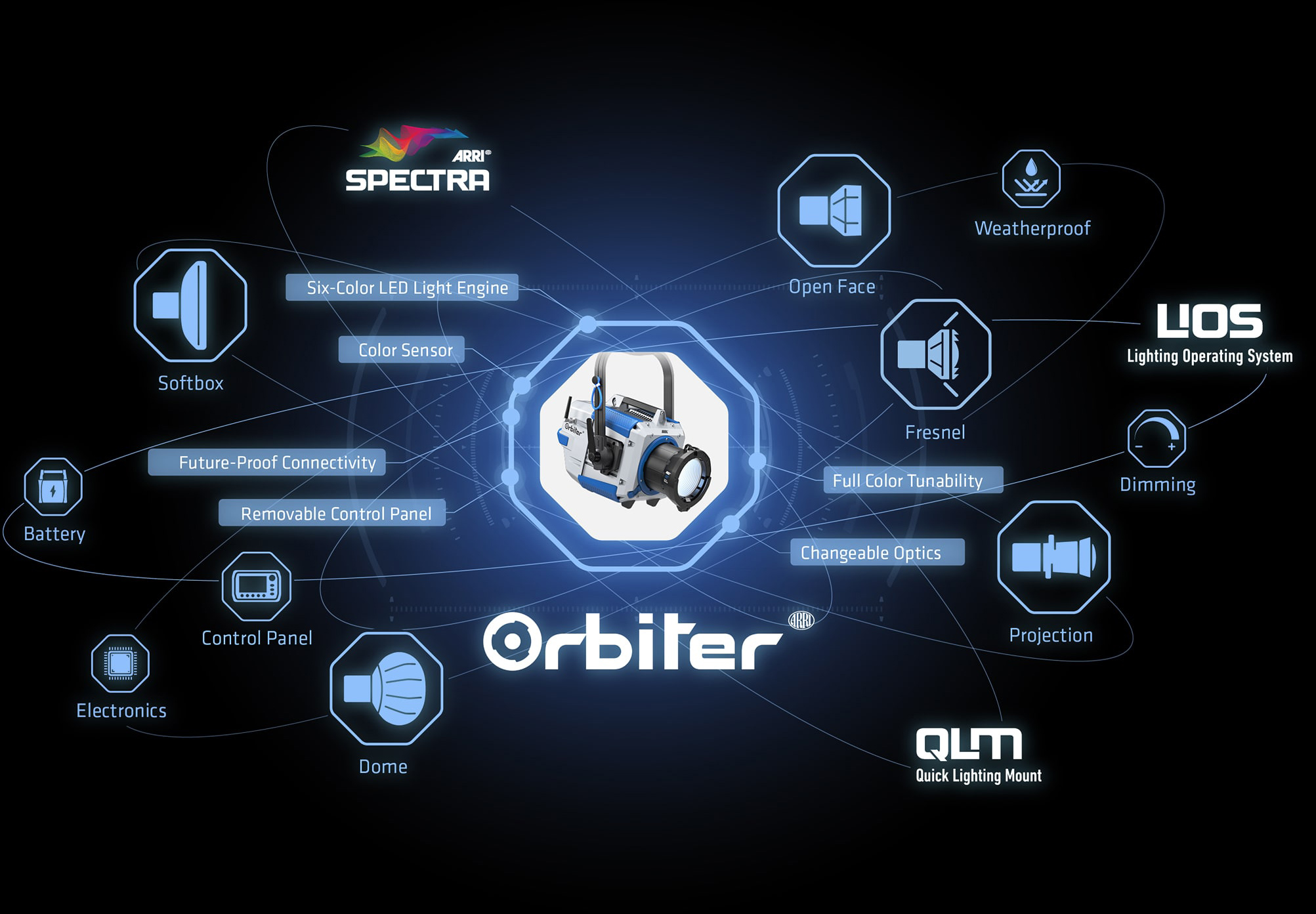When you look at ARRI’s LED lighting portfolio, it’s easy to see the progression and advancements made over the years. When ARRI launched the L-Series (L5, L7, and later the L10) in 2011, they were the first LED fixtures to truly replicate the lighting characteristics of a traditional Fresnel, with a single light “engine” providing smooth focusing between spot and flood. The “-C” in all current models indicates full color adjustments with ARRI’s RGBW light engine, tunable in white light mode from 2,800 K to 10,000 K with CCT adjustments, or in color light mode with full RGB+W HSI control (all accessible via the user panel).

When you connect the L-Series to a lighting console, you can choose between several DMX modes, based on the parameters you’d like to adjust, the level (or granularity) of control, and lighting console capabilities. For example, even with full color light mode, you can engage DMX Mode 5 (HSI), which only uses three DMX channels per light. Although this is running in 8-bit (256 levels of adjustment per function), this is an ideal solution for smaller lighting consoles, or those only looking for basic dimming and color adjustments. At the opposite end of the complexity scale, is Mode 6, a 16-bit (65,536 levels of adjustment) option that provides full White & RGBW mixing capabilities using 16 DMX channels per fixture for incredible precision (but requiring a significant lighting console to handle the number of addresses required per light and to take advantage of this level of granularity). All of this illustrates the amount of control one has with modern lighting fixtures and consoles, but at the same time acknowledges that it can become complicated if one is unfamiliar with the terminology.

When ARRI launched the SkyPanel range, in addition to the classic adjustment options (CCT and HSI), they introduced special effects modes and color matched gel modes with a built-in library of Lee and Rosco gels. The special effects modes could replicate lightning strikes, the flicker from a campfire or television, the multicolored strobes from police lights, and so on. While these effects could be programmed via a traditional DMX board or specialized hardware like flicker boxes, they were now accessible directly from a user-friendly menu. This started a trend of in-unit practical lighting effects, which were previously impossible to achieve without specialty equipment or knowledge.

ARRI launched its Stellar iOS and Android app in 2018, initially designed to work directly with ARRI fixtures, but later updated to work with other manufacturers. While not the first app of its kind, Stellar was designed to move the technical complexities of DMX to the background, allowing the user to focus on the creative aspects of lighting. Stellar launched alongside the SkyLink wireless base station and receivers, creating a bridge between Wireless DMX and WiFi. This turnkey solution allowed users to easily create a lighting plot with minimal set up and interactive controls, and thanks to RDM support on ARRI LED fixtures, full control of all features including the previously mentioned effects and gel modes. With the auto layout feature, the app finds the lights in your DMX chain (either cabled, wireless via SkyLink, or with an Art-Net Gateway) and handles DMX channel assignments automatically. Stellar also brought additional features to the L-Series, as they could now take advantage of the gel and source matching capabilities introduced with the SkyPanels. Even though hardware limitations within the L-Series prevented these features from being added via the control panel on the light, the solution via Stellar is a good example of how ARRI sets out to create an ecosystem within their product families and rolls out features across hardware generations.

This trend continues with the release of the Orbiter, as ARRI has built upon the technologies from previous fixtures and introduced an entire new genre of lighting. Several mechanical innovations include the Quick Lighting Mount (QLM) for fast optic swaps, quick release yokes, and a ruggedized, weather-resistant body. The new Spectra six color light engine provides a wider color gamut and higher color rendition, which works in tandem with the new Lighting Operating System (LiOS) to provide much greater control within the removable control panel. With the integrated wireless DMX and LiOS, we’re starting to see console grade controls within the fixture itself, including the ability for one “host” Orbiter to control multiple “client” Orbiters. This is an intentional progression from features found on DMX based control (including Stellar) to advanced in-unit controls. Orbiter also introduces a suite of sensors that prove ARRI's forward-thinking design philosophy. The color sensor, 3-axis accelerometer, and magnetometer may not be standard sensors in fixtures today, but it wouldn’t be surprising if this approach paves the way for all future lighting instruments.
For a deeper look at the Orbiter and LiOS, check out Megan Donnelly’s Hands-On with the ARRI Orbiter.
It’s safe to assume that the next generation of lights will incorporate LiOS, which is built upon ARRI’s experience with DMX control, advanced in-unit menus and options, and deep integration with hardware and software (Stellar). Much like the PCA, and especially the Electronic Control System (ECS) family, ARRI designs an entire lighting ecosystem to ensure future-forward capabilities, while protecting backwards compatibility for generations to come.





















AbelCine encourages comments on our blog posts, as long as they are relevant and respectful in tone. To further professional dialog, we strongly encourage the use of real names. We reserve the right to remove any comments that violate our comment policy.
AbelCine publishes this blog as a free educational resource, and anyone may read the discussions posted here. However, if you want to join the conversation, please log in or register on our site.
We use Disqus to manage comments on this blog. If you already have a Disqus account registered under the same email as your AbelCine account, you will automatically be logged in when you sign in to our site. If not, please create a free account with Disqus using the same email as your AbelCine account.